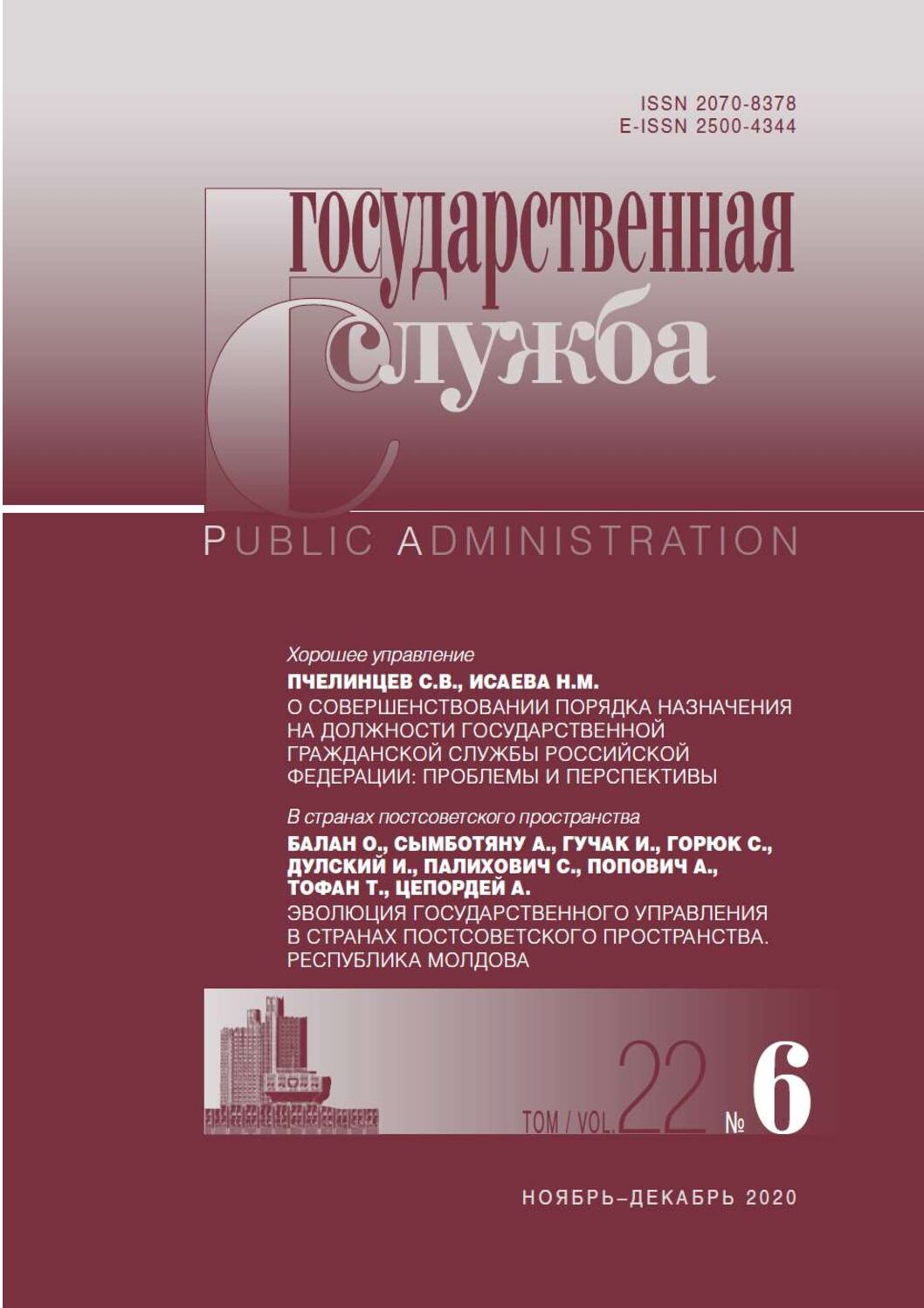Recommended link to article:
ALINA V. KOSTYUKOVAа
аNovgorod branch of the Russian Presidential Academy of National Economy and Public Administration
DENIS S. SHTREISb
bNovgorod Branch of the Russian Presidential Academy of National Economy and Public Administration
DOI: 10.22394/2070-8378-2020-22-6-72-77
Abstract:
The article is devoted to the evolution of the formation of Central state bodies of Russia in the late XV – the first half of the XVI centuries. The core of the study is the problem of the origin of the first Central state bodies (Prikaz system) during the formation of a single centralized state. The authors consider the process of changing individual assignments and positions into state bodies working permanently. The authors show the interrelation between the original core of public administration and the new system and structure of state bodies formed at the beginning of the XVI century. The authors attempt to classify the early bodies of public administration (Prikaz) based on the scope and nature of competence, as well as the principles of their activities. The work reveals general and particular features of the development of the public administration apparatus in Russia with similar processes that took place in this period in Europe.
Keywords:
evolution of public administration, formation of unified centralized state, public positions, assignments, Central state bodies (Prykaz system)
Received:
May 14, 2019
References:
Alekseev Yu.G. At the helm of the Russian state: Essay on the development of the administrative apparatus in the XIV-XV centuries. St. Petersburg., 1998. 348 p. In Russian
Verner I.I. On time and reasons for the formation of Moscow Prikaz. Uchenyye zapiski litseya v pamyat’ tsesarevicha Nikolaya. Issue 2. Moscow. 1908. In Russian
Zimin A.A. On the addition of the Prikaz system in Russia. Doklady i soobshcheniya instituta istorii Akademii nauk. Issue 3. Moscow. 1954. P. 164–176. In Russian Klyuchevsky V.O. Russian history. Complete course of lectures in three books. Book 2. Moscow. 1993. In Russian
Leontyev A.K. The formation of the Prikaz system in the Russian state: From the history of the creation of a centralized state apparatus at the end of the XV – first half of the XVI centuries. Moscow. 1961. In Russian
Liseytsev D.V. The Prikaz system of the Moscow state in the Time of Troubles. Moscow, Tula. 2009. In Russian Liseytsev D.V., Rogozhin N.M., EskinYu.M. Prikaz departments of the Moscow state in the XVI-XVII centuries: Dictionary reference book. Moscow, Saint Petersburg. Institute of Russian History, Russian Academy of Sciences; Center for Humanitarian Initiatives, 2015. In Russian
Metivier Yu. France in the XVI–XVIII centuries. From Francis I to Louis XV. Moscow. 2005. In Russian
Nevolin K.A. Formation of governance in Russia from John III to Peter the Great. Zhurnal Ministerstva narodnogo prosveshcheniya. 1844. Part 41. No. 1/3. Branch V. In Russian
Nefedov S.A. History of Russia. Factor analysis. Vol. 1. From the earliest times to the Great Time of Troubles. Moscow. 2010. In Russian
Essays on Russian Culture in the XVII Century. Material Culture. State System / Ed. by Artsikhovsky A.V. Moscow. 1979. Part 1. In Russian
Semenov O.V. Central Yamskaya department of the Moscow state. Izvestiya Ural’skogo federal’nogo universiteta. Series 2. Humanitarian sciences. 2018.Vol. 20. No. 2 (175). P. 111–121. In Russian
Soloviev B.I. Russian nobility. Rostov-on-Don. 2011. In Russian
Chebanova N.S. The supreme service dealing with petitions in the Moscow state in the XVI–XVII centuries (functions, competence, legal basis of activity). Vestnik Adygeyskogo gosudarstvennogo universiteta. Series 1. 2014. P. 176–179. In Russian
Articles in Open Access mode are published under the Creative Commons Attribution 4.0 International (CC BY) license.

